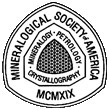 |
The Mineral Identification Key |  |
 |
The Mineral Identification Key |  |
A Simple Identification Kit
In order to use this identification key you will need to assemble an "Identification Kit". Here’s what you’ll need:Most of these items are for testing hardness, and there are more listed than the key itself requires. But when you get to the sections and have specific minerals in mind, the extra hardness tools will help you in determining whether or not your unknown has the specific hardness of one of the minerals listed. A hardness table is provide below showing the relative hardness of the items listed. The streak plate is used for obtaining a colored (or not) powder streak of the mineral. Many minerals give a different powder streak color than the mineral itself. (Such as black hematite giving its characteristic "rust red" streak.) The candle stub or lighter is used for doing basic fusibility tests – will a chip fuse in the flame? The tweezers keep your fingers from getting burned doing the fusibility test! A magnet is used for testing whether or not a sample is magnetic. A loupe is often necessary for examining broken mineral surfaces to check the cleavage. And figuring out what mineral you have would be a waste of time if you don’t label the sample – and forget what it is by the time you get around to looking at it again.
- A piece of plain white paper (a blank specimen label works great.)
- Your fingernails (preferable still attached to your fingers!)
- A copper penny ( pre-1983; or small – ½ inch – piece of copper; or short piece of heavy copper wire.)
- A small piece of fluorite (a broken cleavage piece is fine.)
- A pocket knife (NOT a Swiss Army knife – the steel in those is harder than in most cheap pocket knives, which can throw hardness tests off.)
- A small section of a steel file (a 2 or 3 inch tip from a triangular file for sharpening chain saws works fine.)
- A piece of a quartz crystal (with at least one good face and a sharp point - a broken section usually has a sharp point on it somewhere, it doesn’t have to be a crystal termination.)
- A small piece of a beryl or topaz crystal (with at least one good face and a sharp point or edge.)
- A small piece of a corundum crystal (with at least one good face and sharp point or edge.)
- A "streak plate" (unglazed porcelain tile – a 2 inch square is plenty.)
- A short candle stub and matches or a cigarette lighter.
- A small pair of tweezers.
- A needle in a wooden dowel (for generating cleavage, etc.)
- A small magnet (a refrigerator magnet is fine, but it should be a fairly strong one.)
- A plastic dropper bottle for dilute (10%) HCl acid solution (Please read, understand and follow the label warnings and Material Safety Data Sheets when working with any hazardous material).
- A 10x hand lens/jeweler’s loupe.
- Blank specimen labels.
- Pens or pencils.
The items can be kept in a leather pouch, a small plastic box – or anything that’s the right size and durable. But it is a good idea to keep the kit items together in some sort of container. Then you always know where to find them when you need them.
[ Table of Contents ] [ Introduction ] [ Identification Kit ] [ Mineral Properties ] [ Environments & Associations ] [ In Conclusion ] [ The Mineral ID Key ]